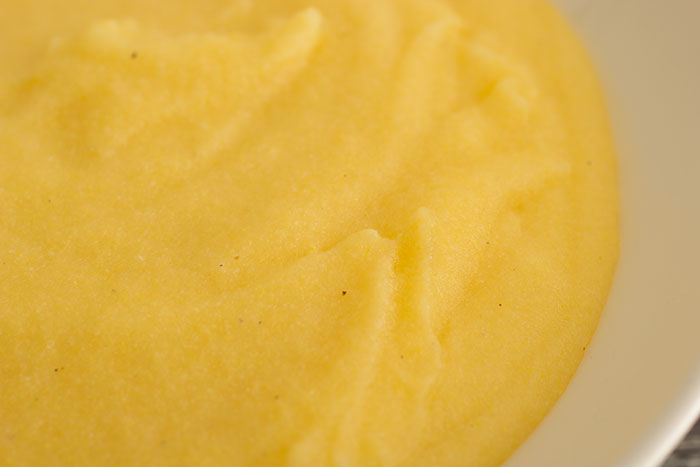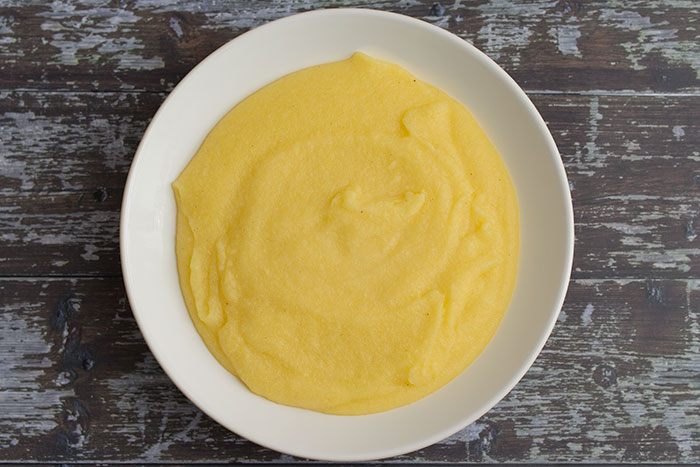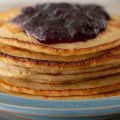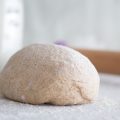I’ve seen many times the word Polenta being used in a wrong way, including in cookbooks by well known chefs. It can be quite puzzling because you can use polenta to create other dishes with it. So, I’ve decided to talk about it today. When it comes to ingredients, I’m going to use the names we use in UK, as you might expect from an UK-based food blogger. In other English speaking countries, these terms might differ, just keep that in mind when you are reading my post.
You can find on my blog a few recipes with polenta, including as a side dish for kalettes, as fried dumplings, and chips. My mother would use leftover polenta to make an egg and cheese scramble with polenta bits in it. I used to love that and I was always asking her to make enough polenta so she could prepare this dish for me the following morning.

What is Polenta?
Polenta is a dish made out of cornmeal. It’s as easy as that. Polenta is not a different term for cornmeal, just as porridge is not a different term for oats. I use this comparison because polenta is a porridge-like dish, in how it is made and of course, its ingredients (cereal + water).
Polenta can be made from cornmeal, but not corn flour. The flour is too fine for polenta. It can be used in baking and for thickening sauces, but it is not suitable for making polenta. For this dish, you need cornmeal. Cornmeal is a meal ground from dried maize. It can be fine (but is not as fine as corn flour that looks exactly like wheat flour in texture), medium, or coarse, with bigger bits of grains.
If you make polenta with coarse cornmeal, the polenta will have a slightly different texture. If you like experimenting, then buy all three kinds of cornmeal and make polenta with all of them, to see which one you prefer. In the British supermarkets you might find ready made polenta, in packages of 500g. I bought it and it is made with fine cornmeal. The one from the supermarket is made pretty similar to the one you can make at home, the only addition being a bit of Tartaric Acid (extracted from fruits).
But, if you make it at home, you can decide its consistency, so it is much more versatile.

How to make Polenta.
Polenta is made with three ingredients: cornmeal, water, and salt. Thus is vegan, gluten-free, and easy to make. The easiest method is to put 75g of cornmeal in a pan, pour 500ml cold water on top and add a pinch of salt. Put it on the hob at medium heat and bring to boil. Stir from time to time, so it doesn’t catch the bottom of the pan. When is bubbling, put the lid on top and leave it to cook for 10 to 15 minutes. Make sure you are careful with the bubbling polenta, as it can easily scald you.
As you can see, the recipe is very similar to porridge. You can add a bit more cornmeal if you are looking for a firmer polenta, one that you might like to make chips from, for example. Experiment and see which texture you like best. I do prefer a smooth texture that is not too thick.
I hope I’ve answered any questions you had about polenta. Let me know in your comments if there is anything else I can tell you about this dish.





I have never to my knowledge eaten polenta. However, being from the US south, I’ve prepared and eaten more than my share of grits, a very similar dish. I’m thinking the greatest difference is that grits use white cornmeal that is ground more finely.
I have never made polenta at home…yours looks really comforting and tasty.